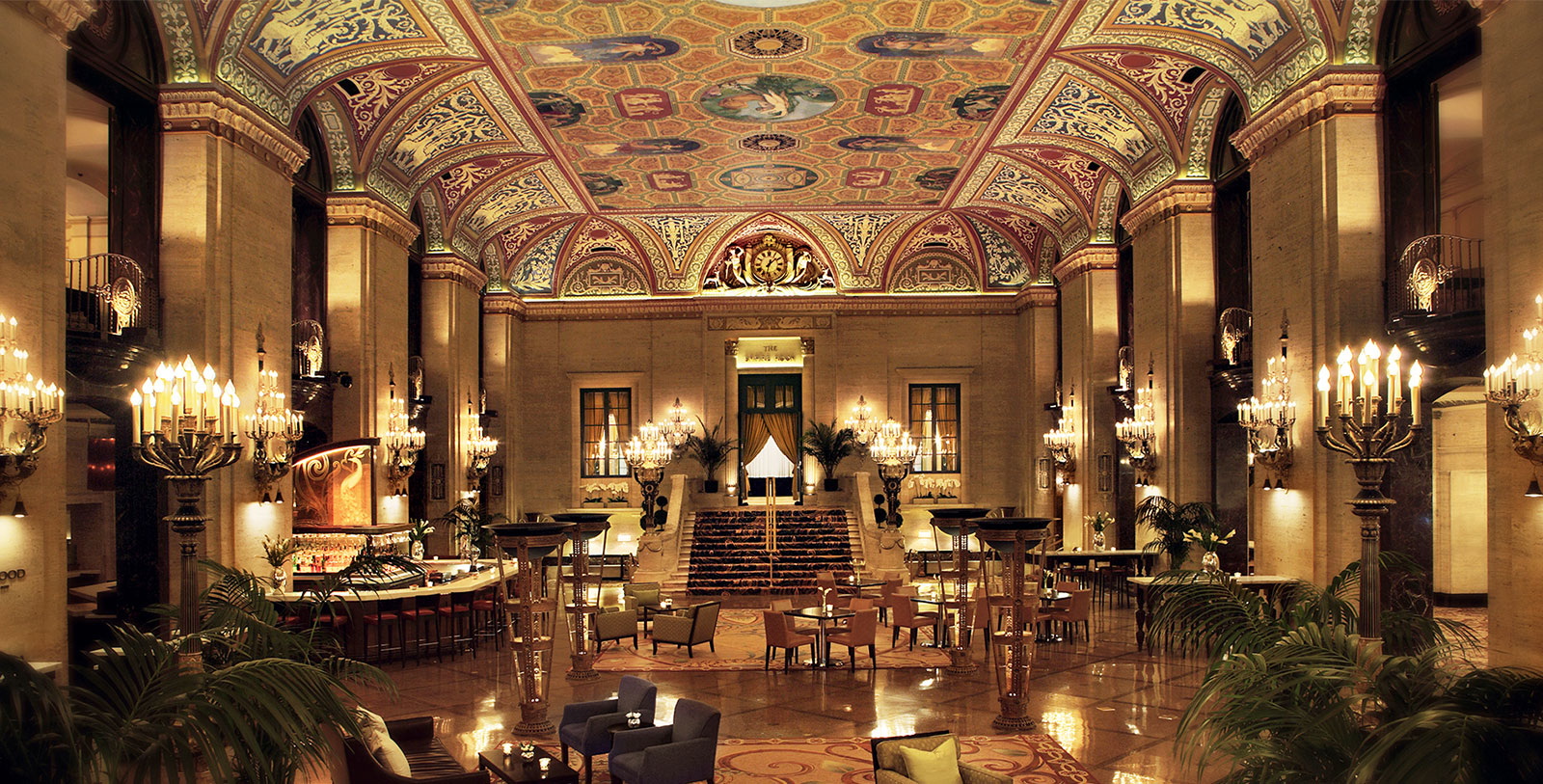Ever seen the "Pink Palace,” aka The Don CeSar hotel, in St. Pete Beach? It is massive. It's so big that it's on nautical charts as a guide for boaters! It has been salmon pink for the entire 94 years of its life, its color protected by law because it is a mariner's guide. This monumental, 40,000-square-foot resort has been featured in National Geographic and "Emeril’s Florida," and was the setting for scenes in at least five films and two music videos. The Pink Palace has an award-winning spa, produces award-winning, AAA Four-Diamond food, and in 2015, basked in its designation as the Best Historic Hotel in America. It is the only historic hotel on Florida’s Gulf Coast. But I bet there is one thing you don't know about it. Before I tell you what that is, let’s take a glance at the Don CeSar’s roller-coaster past.
Like so many of Florida’s grand, old, East-Coast, beach-front hotels, it was built in the 1920s “Jazz Age,” and like them, boasts of having once been “the playground” of the rich and famous, including such superstars as F. Scott and Zelda Fitzgerald, Al Capone and Lou Gehrig, among other famous writers, gangsters, athletes, politicians and super-rich capitalists.
The builder of the Pink Palace was Thomas Rowe, an architect from New York, who came to Florida for his health in 1924, at the height of the Florida “land boom” of the 1920s. Standing ankle-deep in the warm, floury, white sand of the Gulf coast, Rowe conjured in his architect’s brain the vision of an immense sandcastle that would dominate the beach where he stood. Like so many winter visitors before him, his eyes, as they swept the sparkling sand and sea, registered happy dollar signs. An investment in this untouched Shangri-La would pay unlimited dividends.
Thomas Rowe paid $100,000 (the equivalent today of nearly $1.3 million) for 80 acres of the barrier island off St. Petersburg, hired an architect and a building contractor, and began designing the sandcastle of his dreams.
From a floating concrete base, designed by Rowe to prevent his massive edifice from sinking into the gulf, his hotel was dribbled slowly, over a period of two years, into being. In the process, Rowe doubled its room count, more than doubling his cost. He had to borrow money to finish his “Pink Lady,” but by the turn of the new year of 1928, his imagined castle in the sand was realized. There she stood, in all her flamingo-pink, Mediterranean Revival glory, her doors flung wide to a gala grand opening.
Oddly, Rowe named his Pink Lady, "Don Ce-Sar” after Don César de Bazan, the hero of the immensely popular British opera “Maritana.” The opera, which Rowe must have seen in London while he was a student of architecture there, obviously and for whatever reason, made a deep impression upon him.
This brings me to the part I bet you don’t know about this hotel. It involves the very thing for which the Don CeSar may be best known. Legend has it that it was not the opera, “Maritana,” but the opera's heroine, with whom the young Thomas Rowe fell in love.
The story of Rowe's tragic love affair with the actress who played the part of Maritana has been told, with increasingly fanciful embellishments, by writers and advertisers for decades. It is even stated as fact on the "History" page of the hotel's own website, that the hotel was “built as tribute to his [Rowe’s] lost love.”
The band American Sinner released a digital album titled “Island of the Dolls," in which the lyrics of the track, "Maritana," are based upon this presumed love affair. The tale is told on americansinner.bandcamp.com, as follows:
"‘Maritana’ is based on the story of Thomas Rowe and Lucinda de Guzman. They met in London in the 1890s when Lucinda was performing in a William Vincent Wallace opera — a love story about a Roman street singer, Maritana, and a Spanish nobleman, Don Cesar. Lucinda’s family was in fact Spanish nobility and her parents forbid the relationship with Thomas — a merely affluent American student. When they planned to elope, her parents discovered the plot and hid her away.
“Thomas sent letters to Lucinda for years, all returned unopened. Lucinda died young. On her death bed, she wrote this letter to Thomas:
“‘Tom, my beloved Don Cesar. Forgive them both as I have. Never would I despair. Nor could I forsake you. We found each other before we will do so again. This life is only an intermediate. I leave it without regret and travel to a place where the swing of the pendulum does not bring pain. Time is infinite. I will wait for you by our fountain to share our timeless love, our destiny is time.’”
Thomas is said to have built, in the lobby of the Don CeSar, a replica of the fountain in London where he and Lucinda would meet.
A tour company in St. Pete Beach conducts ghost tours of the Don CeSar that narrate the story, ending with a description of the ghostly meetings of Thomas and Lucinda that have been witnessed by staff and guests at the fountain in the hotel. And in a blog post on the Don CeSar website, “The Haunted Ghosts of the Don CeSar Hotel,” the preposterous tale is told again as fact.
I ran across one responsible writer, however, who, rather than simply repeat the story, did some research into the various elements of the fable to discover that “Opera historians, and newspaper reviews from New York and London, confirm that Maritana was performed on both sides of the Atlantic for a decade before and after 1900. But there is no mention of a soprano named Lucinda."
Lane DeGregory, the author of this March 2008, Tampa Bay Times article, titled "Love's Fate is Sealed," said that she asked the concierges at the Don CeSar where they got the story they were relating to guests at the hotel. They said they got it from the hotel's marketing department, who, upon being questioned, said they got it from the book, "Ghostly Encounters: True Stories of America's Inns and Hotels," by Frances Kermeen, who replied to DeGregory's email that she got it from her PR contact at the hotel.
This reminds me of the story of the pirate Gasparilla, in Southwest Florida folklore. As I stated in my April 2019 News-Press story, "History of Pirates in Local Waters?" "There is no documented evidence that pirates, prior to the cocaine-crazy 1990s, ever operated in local waters.” In fact, José Gaspar, who is often referenced as the "real life" model for Gasparilla, is himself a fiction, originating “in 1900 in a sales brochure put out by the Charlotte Harbor and Northern Railway company to promote The Gasparilla Inn & Club.”
At some point in time, the Thomas Rowe and Lucinda fable was conceived by a Don CeSar marketing rep, and the story, carelessly repeated by other writers, made its way full circle, in print and online, through books, articles, television and tour operators, back to the hotel’s marketing associates who had no clue that the story originated from their own department in the first place.
Moral of the story: Just ’cause somebody says so, don’t make it so.
The facts are that, after his return to the States from London, Rowe married the young Mary Lucille, daughter of a wealthy Virginia landowner, for whatever advantage he gained by the union, for it is said that he never loved her. They were estranged by the time he came to Florida in 1924, but when Rowe died intestate in 1940, Mary inherited his great hotel.
By that time, however, Rowe’s sandcastle, subject to the erosive tides of economic depression and war, was in decline. Mary was able to dispose of it in 1942 by selling it to the U.S. Army for use as a military hospital. Two years later, it was a convalescent center for the U.S. Army Air Corps. After the war was over, it became a veterans administration regional office for the next 22 years.
For three years after the government abandoned the property in 1969, its only visitors were rats and teenagers with spray paint, their litter of cigarette butts and empty beer bottles a pathetic mimicry of the parties that, in its decade of glitz and glamor, when all the "bright young things" of the '20s danced and drank ’til dawn, were "simply too, too divine, darling."
In 1972, The U.S. General Services Administration announced its intention to demolish the gutted, graffiti-covered, old building. It was a wakeup call to local citizens. Rallied by June Hurley Young, host of Tampa’s version of the TV show "Romper Room," they flat-out would not allow it, and the government sold the property instead to a Holiday Inn-franchise owner. Eighteen months later, on Nov. 23, 1973, at a cost to the new owner of $3.5 million, the renovated and remodeled Don CeSar reopened. Two years later, the formerly condemned hotel was placed upon the National Register of Historic Places. In 1989, the Don CeSar became a founding member of Historic Hotels of America.
Over the past nearly 40 years, the Don CeSar has been renovated, restored, expanded, and refreshed to the point that it is today the AAA-rated, four-star Don CeSar Beach Resort and Spa, offering more services and amenities to its guests than many small towns. It ought to have its own ZIP code.
Rooms are priced a bit higher than $24 a night they cost in 1928, but if you wish to add your name to the hotel register that includes those of Franklin Delano Roosevelt and every president (but Ronald Reagan) since Gerald Ford, book your stay today!
Discover more of the fascinating history and heritage of The Don CeSar!
Read the full article from News-Press here.
About Historic Hotels of America®
Historic Hotels of America is the official program of the National Trust for Historic Preservation for recognizing and celebrating the finest Historic Hotels. Historic Hotels of America has more than 300 historic hotels. These historic hotels have all faithfully maintained their authenticity, sense of place, and architectural integrity in the United States of America, including 44 states, the District of Columbia, the U.S. Virgin Islands, and Puerto Rico. Historic Hotels of America is comprised of mostly independently owned and operated historic hotels. More than 30 of the world’s finest hospitality brands, chains, and collections are represented in Historic Hotels of America. To be nominated and selected for membership into this prestigious program, a hotel must be at least 50 years old; has been designated by the U.S. Secretary of the Interior as a National Historic Landmark or listed in or eligible for listing in the National Register of Historic Places; and recognized as having historic significance.
































